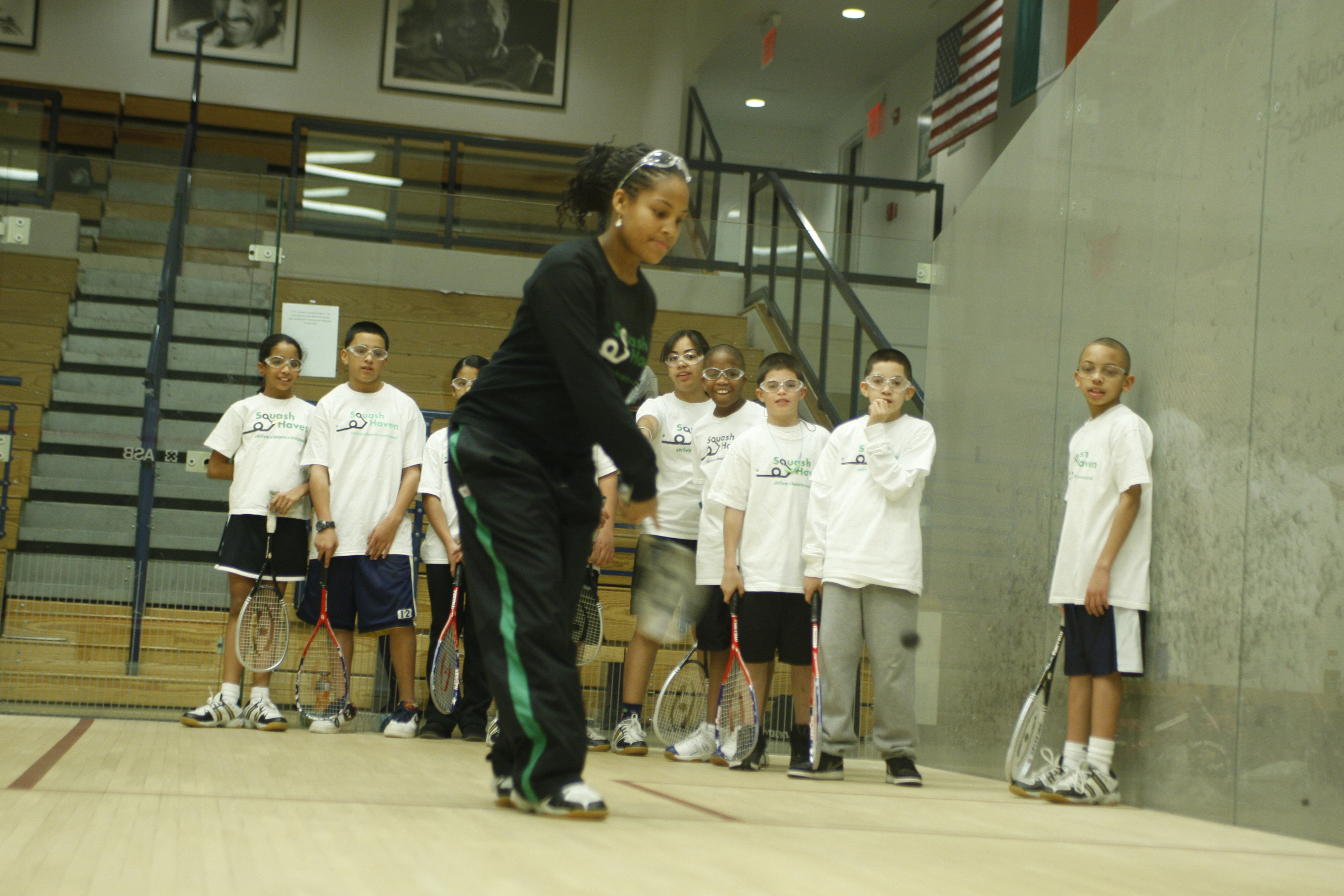
By Lee Stabert
Photos by Dale Walker/DaleWalkerPhoto.com
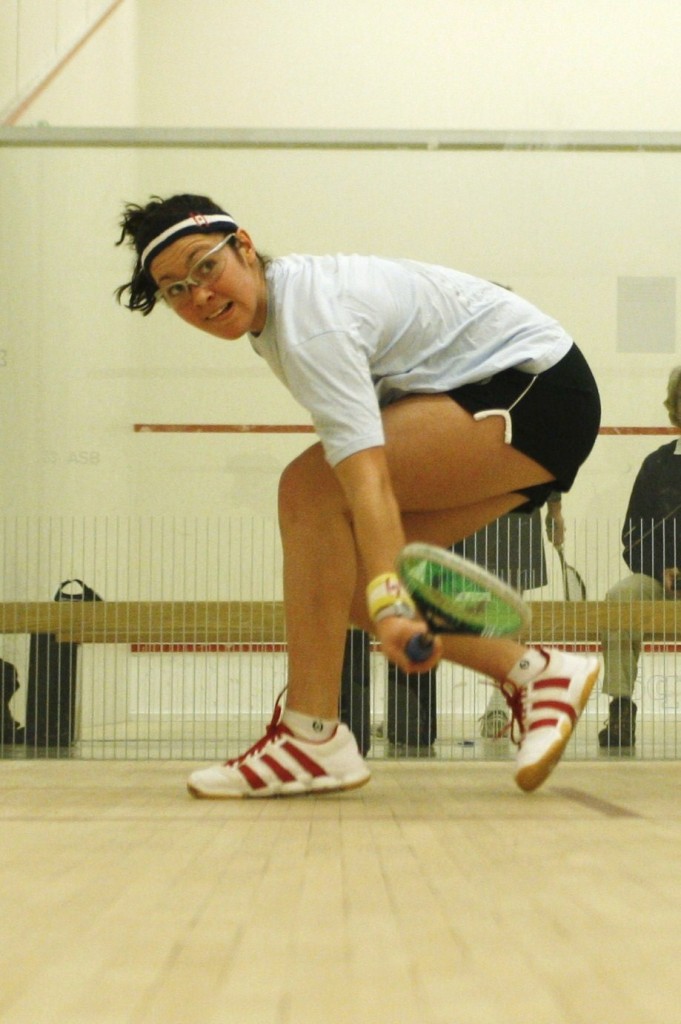
In squash, you can never underestimate the ability of your opponent to pull out that miracle scrape. This fall, when U.S. SQUASH made the last-minute decision to cancel the beloved U.S. Five Man (now U.S. Five Person) Championship, it inspired some impassioned grassroots organizing and ultimate success—a testament to the strength of American support for the sport and its traditions. So, what in years past had always been an anticipated event became something more: a labor of love for a few determined players and coaches who refused to let the tournament die.
The US Five Person (which opened its doors to women three years ago) has always been admired for its inclusiveness. Teams of pros face off against top college players and shaggy-haired juniors tackle opponents twice their age. Made up of an Open and a B Division, the tournament—which pits diverse teams of five against each other in match-play showdowns—has always delivered a festive atmosphere and the chance to catch world-class players in action. Princeton coach Bob Callahan crystallized the unique nature of the tournament: “This is the only event in the country that enables college teams, up-and-coming junior teams, women’s teams, and top professionals to all play in the same draw.”
So, when U.S. Squash pulled the plug on the event, hoping to restructure it in future years, supporters refused to let it go quietly into the night. Spearheaded by Yale squash alum Josh Schwartz and his former coach Dave Talbott, an urgent push to resurrect the Five Person was forged. In an inspired move, the organizers brought Squash Haven—a local program promoting urban squash—into the fold, using the non-profit as an additional rallying cry. Program director Julie Greenwood was more than happy to get involved. “The energy that comes from the Five Players is just what it should be—enthusiastic, hard-fought, fun-loving, and team-oriented,” explains Greenwood. “One of the benefits of having an urban program at a facility like Yale is that our team members are frequently exposed to elite players and the highest levels of play. The Five Person weekend provided an incredible opportunity for team members to learn by watching and for us to continue to spread the word about Squash Haven.”
In response to the indefatigable efforts of community members, U.S. Squash eventually came back to the table and sanctioned the event, while leaving tournament responsibilities to Talbott and Schwartz.
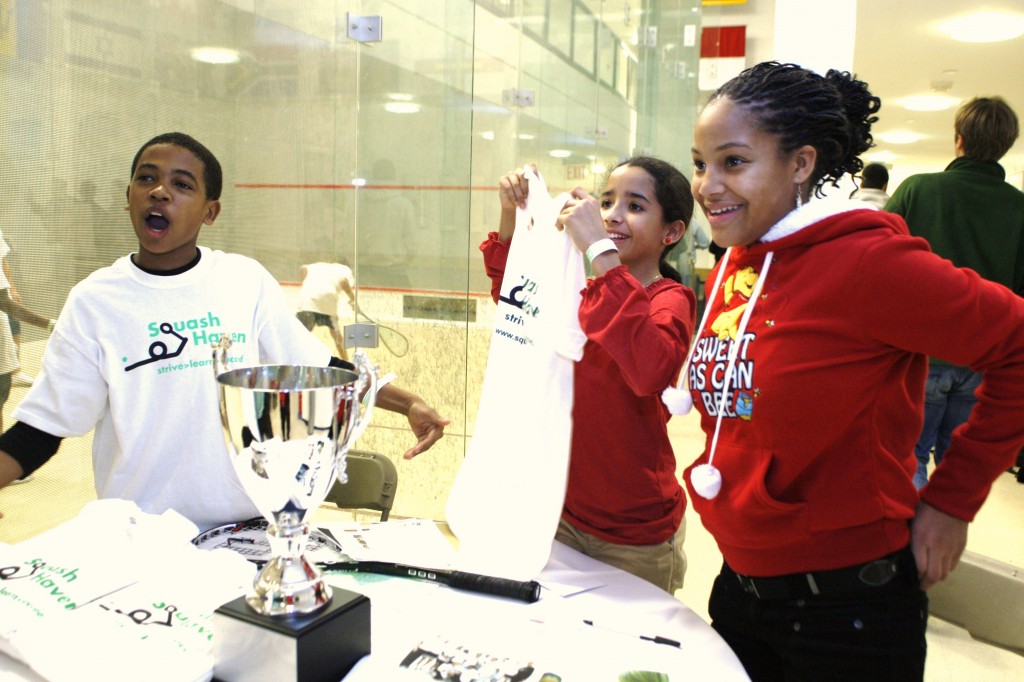
The outpouring of enthusiasm that saved the Five Person also led to a boost in fundraising. With the prize money bumped up to five thousand dollars; top pros were inspired to make the trip. The event featured more than ten current or former top 100 players in the world—including the top three American pros—and players from approximately 20 countries. The Open Division also showcased a wide breadth of experience, from Team Sons (average age fourteen) to 39-year-old Harvard Club captain Richard Chin.
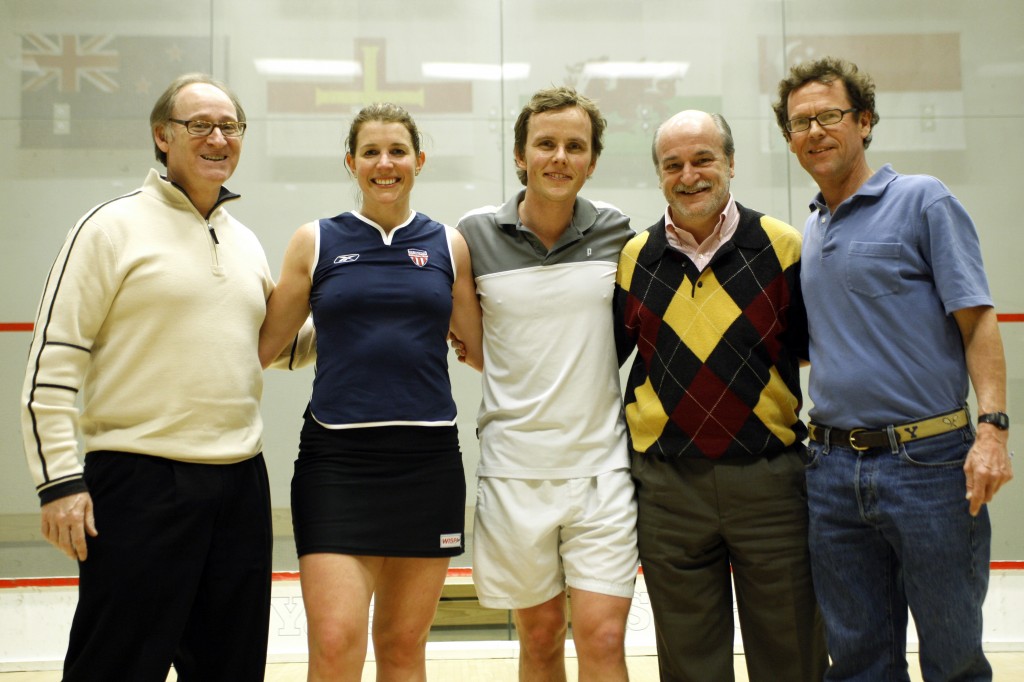
Captained by Mick Robberds and led on the court by No. 1 seed Liam Kenny—a current teaching pro and former world No. 31 —two-time defending champions and top seed Hartford came in as the clear favorite.
The top four seeds advanced through the draw to the semifinals with relative ease, setting up two intense match-ups. The Princeton team, led by Kimlee Wong and Chris Callis, put up a valiant effort against the elder statesmen from Hartford but eventually fell 5-0. (Think this team was good? Former ten-time Zambian national champion and world No. 93 Robby Lingashi played No. 5 for Hartford in the semis).
The second semi between the Yale Alumni team and the Harvard Club team was tighter as four former Yalies—plus Penn alum and third ranked U.S. pro Gilly Lane—battled two former Crimson, H-Club head pro Richard Chin, H-club assistant pro and former Princeton all-star Yasser El Halaby and touring pro Chris Gordon (former member of H-club). Yalie Nick Chirls opened the match with a decisive 3-1 win over Dave Barry (Harvard Squash captain ’02). Unable to match Chin’s drop lob game, Gareth Webber lost a tough 3-0 match at No. 3. In a replay of their college days, Dylan Patterson and Schwartz did battle at the No. 4 spot, with Patterson coming out on top of the visibly tired event organizer Schwartz. After a Lane upset over H-Club No. 2 Chris Gordon (who was returning to competition after a month off due to a hamstring injury) it came down to top U.S player Julian Illingworth versus H-Club’s El Halaby. In a rematch of many epic Yale-Princeton matches in New Haven, Illingworth won in three sets, sending Yale to the finals.
The final was a bit less dramatic as the Hartford All-Stars won a resounding 4-1 victory. Although the score was lop-sided, both Illingworth and Lane put on hour-plus fights before succumbing to Kenny and Reggie Schonborn at No. 2.
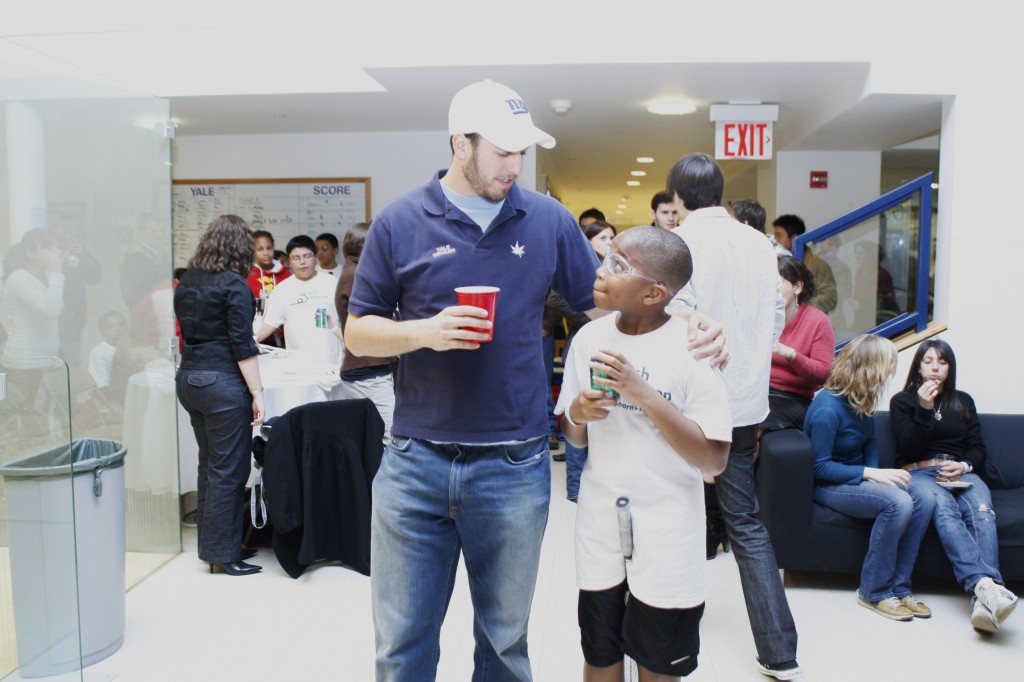
The B Division also featured spirited play from many Five Player veterans. No. 1 seed “New York,” captained by 13-year tournament staple Michael Scherl, breezed through to the finals where they were defeated 3-2 by a team from New Haven. The draw was an eclectic affair, featuring a high school team, multiple women’s teams, a Yale alumni team, a Southport team and a local New Haven team. Next year, the organizers hope to expand the B Division to include all top women’s collegiate and local club programs.
But the weekend wasn’t all about boasts and rails. Saturday night, the Brady Squash center hosted a fundraiser for event sponsor Squash Haven. In addition to drinks, dinner, snacks and sock dancing on center court, the party featured testimonials from SH participants and live music from local student band Suitcase of Keys and Brian Mathias, a Cornell squash alum whose band traveled from New York City to perform.
In an additional coup, Schwartz, who is deeply involved with World Olympic Squash Movement 2016, recruited world squash stars Peter Nicol and Natalie Grainger to play an exhibition during Saturday’s competition to raise awareness for the organization’s efforts. At 1:30 p.m. tournament play was stopped and the two wily veterans showcased the speed and style that the sport is itching to show the world on its grandest athletic stage.
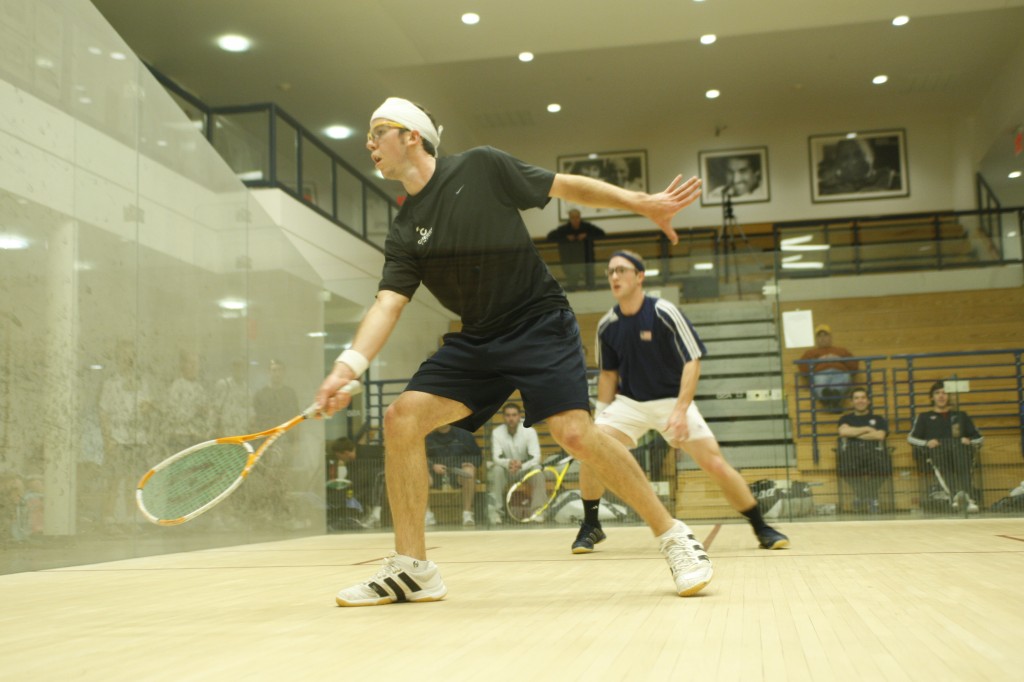
Former CEO of U.S. Squash and current World Squash Movement supporter Palmer Page thinks the exhibition served its purpose. “I was glad to be able to get the Olympic effort in front of hundreds of folks at the Five Person,” says Page. “We have no shortage of organization—led by the WSF, PSA and WISPA—but it also takes a lot of money to position squash to be selected. It was exciting to have Natalie and Peter give this exhibition and talk about the need to marshal resources for a high quality PR campaign, a film that shows the sport’s television potential and participation in SportsAccord and IOC meetings.”
The success of this year’s event—even under somewhat hectic circumstances—builds expectations for next year. Yale coach Dave Talbott is optimistic. “The Championships were a great success this year,” says Talbott. “The event is a unique opportunity for top professionals like Julian Illingworth, Reggie Schonborn, Gilly Lane, Yasser El Halaby, and Chris Gordon to participate against college players and amateurs alike. This year’s event added an exciting wrinkle with the participation of Squash Haven, Yale’s urban enrichment program. The tournament remains one of the most popular events of the season and is looking towards continued growth next year.”
Schwartz was equally as enthusiastic. “I think the success of the Five Player Championships showed the passion that people in the squash community have towards their sport,” explains Schwartz. “The grassroots efforts of recreational and pro players not only got the event reinstated, but helped create a memorable weekend featuring world-class squash play, a charity event supporting Squash Haven and an unforgettable exhibition. The fact that a small group of people with full time jobs could rally the time and money and pull together such a fabulous weekend shows the wide-ranging appeal the sport has in the U.S. We did it all for the love of squash.”


